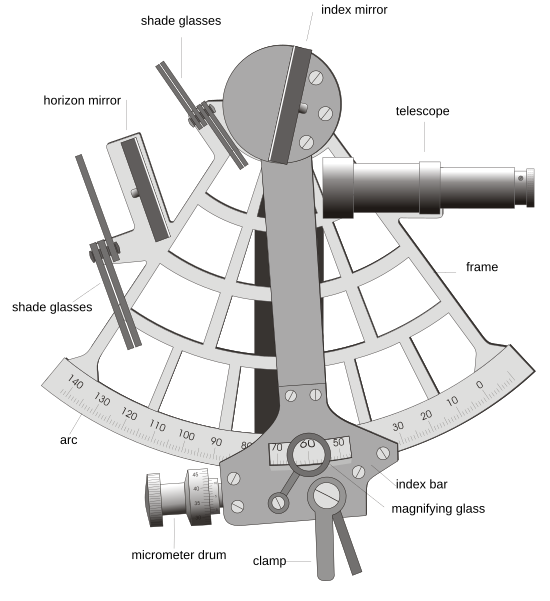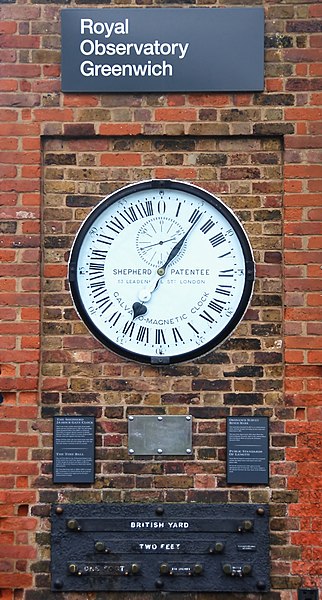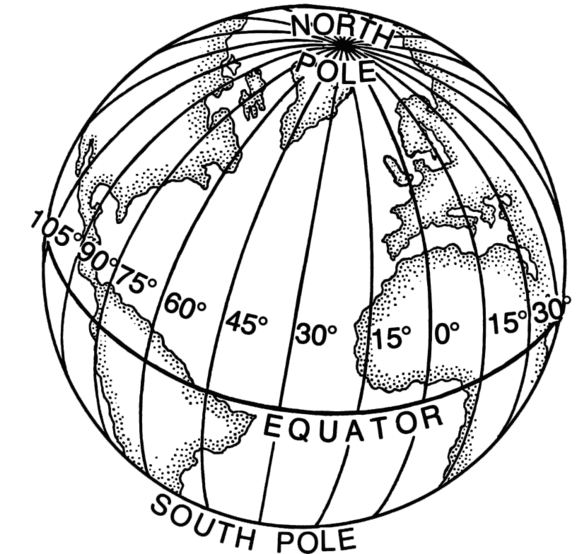In other words, at 16:58:38 GMT, the Sun and I were on the same Longitude. So if we can find the longitude of the Sun at that moment, we will know my longitude. It's that easy.
How do we find the Sun's longitude at that exact moment? From the Nautical Almanac, of course.
Daily Page, Nautical Almanac
The Sun's longitude at any particular time (GMT, of course), is called its Greenwich Hour Angle, in celestial navigation lingo. More commonly abbreviated as GHA.
The Daily Page of the Nautical Almanac lists the Sun's GHA for every hour of the day. It's under the 'Sun' column on the left side, labeled 'GHA'.
We will use the information on the Daily page to find the GHA of the Sun at the nearest hour: 16:00:00 GMT. If you inspect the table, you will see that, at that time, the Sun's GHA was 58° 35.2'.
Next we need to look up how far the Sun traveled in the next 58 minutes and 38 seconds. Again, the Nautical Almanac provides the answer.
Increments and Corrections Pages
Nautical Almanac
In the Nautical Almanac, the "Increments and Corrections" pages list how far the Sun (and Moon and planets and stars) move through the sky from 0 seconds, up to 1 hour. Since we want to know how far the Sun moved in 58 minutes and 38 seconds, we turn to the 58 Minute page (click on the above image for a closer look).
The seconds are listed down the left side. The Sun's incremental GHA is in the first column on the left.
If you follow the seconds down to 38, you will find the incremental GHA for 58:38. It's 14° 39.5'.
If we add the hourly GHA and the minutes/seconds GHA, we'll find the Sun's exact longitude at 16:58:38:
58° 35.2'
14° 39.5'
---------
72° 74.7'
or
73° 14.7'
And since that, dear reader, was the Sun's longitude at solar noon, it was also my longitude. At least according to my sights and calculations.
So, putting the latitude and longitude together, my fix was:
N40° 40.1' W73° 14.7'
or
N40° 40' 6" W73° 14' 42"
Using Google Maps, we can map this location to see how we did.
The Great South Bay and Fire Island, off of Long Island, NY
On the map are two blue markers. The top one is at N40° 40' 6" W73° 14' 42". It's in the middle of the Great South Bay, just east of the Robert Moses Causeway, that goes out to Fire Island.
My actual location was on the beach at Fire Island, just opposite the light house, at N40° 37' 48" W73° 13' 03".
Those two points are 2.8 nm apart. Disappointed? Don't be! Although you will read that it's possible to get sextant fixes within .2 nm, I've never seen this in actual practice. If I can get within 5nm, I feel I'm doing pretty good. In a small boat, with a healthy chop or swell, 20nm is more like it.
And 5-20nm accuracy is good enough for actual use.
If you were crossing the Atlantic, say, and were taking daily noon Sun fixes, a 5nm accuracy would be more than you could use on a big Atlantic chart. And by the time you got within 20nm, you'd be on deck, scanning the horizon, waiting to say "Land Ho!" as loud as you could.
How could you improve these results?
You'd probably get more accurate sights with a good, metal sextant, like an Astra IIIb
However, a sextant is only as good as the Navigator. It takes a lot of judgment and skill to line up the Sun with the horizon. Especially when the Navigator is being thrown around the companionway, and the horizon looks like the business side of a saw.
It also takes skill to plot the sights and draw a smooth, symmetrical noon curve -- particularly when the sights are not as neat and clean as you get from dry land.
This kind of skill only comes from months or years of daily practice. The kind of practice you'd get on an Atlantic crossing. If you're like me, you only dream of getting that kind of practice, but at least now you know what to do if you ever get the chance!
Bottom line, a sextant is not a GPS. That's why GPS -- let's not pretend here -- has rendered the sextant obsolete as a navigation instrument.
On the other hand, finding your location using a sextant is a heck of a lot more fun! And that's what this has all been about. A bit of summer fun, learning a new skill.
My goal has been to conduct you through this first fix with as little math and mumbo-jumbo as possible, to show you that Celestial Navigation is not rocket science or black magic. If I've done my job well, you should be saying to yourself, "Hey, that wasn't so hard, after all!"
I hope it's been as much fun for you as it's been for me.
I'll try to take another set of sights next week, so you can try to work one on your own. Until then, if you have any questions, please leave them in the comments section below, or email them to john@unlikelyboatbuilder.com.
Speaking of next time... if you'd like to be notified when I post a new 'lesson' (erratically, about 3 times a week), you can sign up for my super-sophisticated Automatic Notification Process. Actually, it's just an email, but Automatic Notification Process sounds better. I won't spam you, and you can de-sign up at any time.
If you enjoyed this episode of the Unlikely Boat Builder, please consider telling a friend about it, or posting a link on Facebook. Thanks!
Get Notified Automatically
I hope you're enjoying "The Unlikely Boat Builder" as much as I enjoy writing it. Over 250 people have asked for a way to be notified automatically when I post new episodes. I've figured out how to do this, so if you'd like to be notified, please click on the link below. I promise I'll never spam you (and Google will have my head if I do.)
Thanks for your interest!
-- John
Follow me on Twitter! My son Chris has been bugging me for a few weeks to use Twitter to make short, more frequent posts from my iPhone, for when I don't have the time for longer blog posts. I don't know how it will work out, but I'm willing to give it a try! My Twitter ID is UnlikelyVoyager (UnlikelyBoatBuilder is too long, apparently), and the URL is http://twitter.com/UnlikelyVoyager. Twitter me back, or leave a comment below, if you think this is worth while. Thanks, Chris!




























